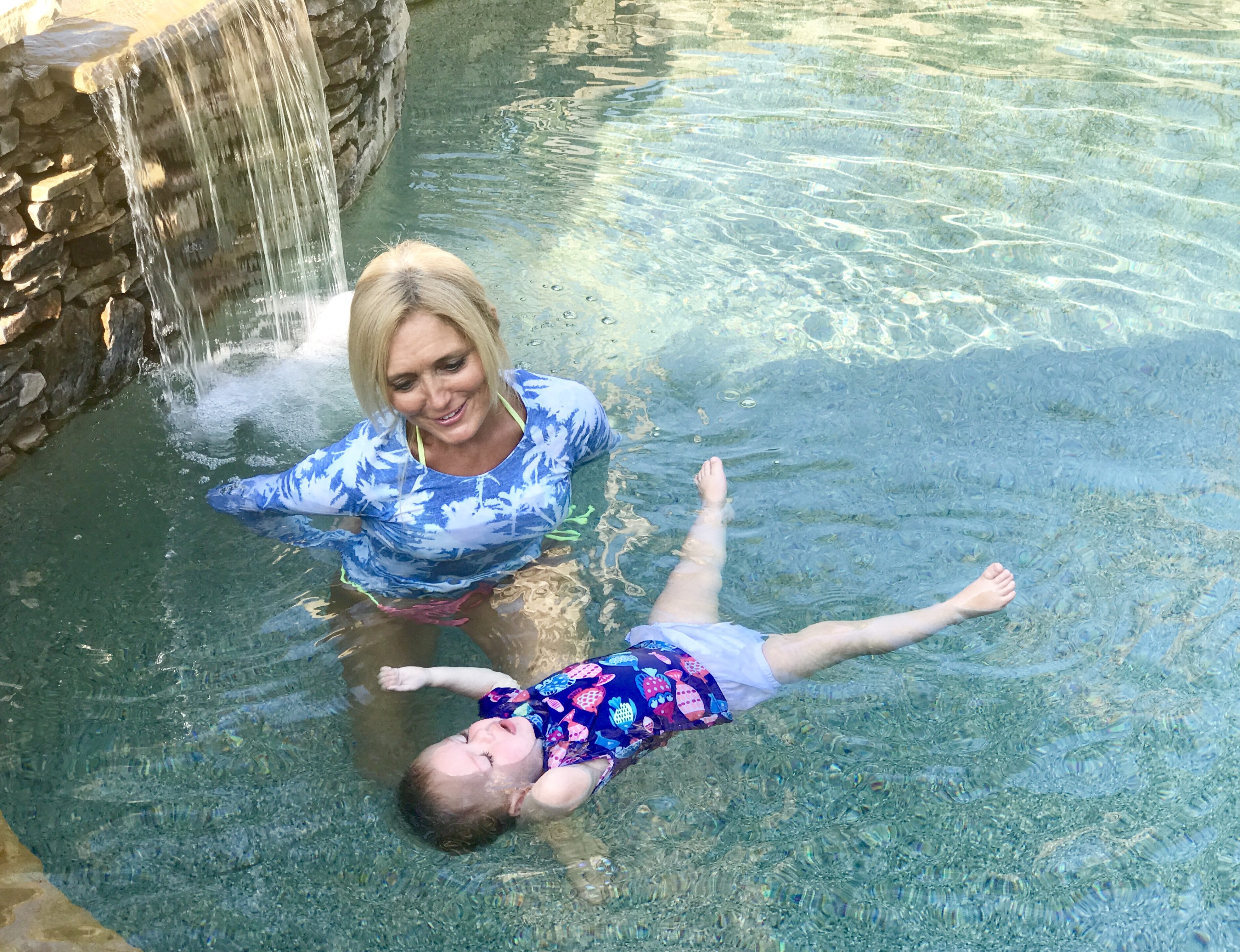
Florida ranks highest in the nation for drowning deaths of children under the age of four. A grim statistic to consider before heading out to the beach, lake or pool this Memorial Day.
Memorial Day is the official start of the summer season and the best time to remind parents of the importance of teaching children about water safety.
Florida had the highest drowning rate in the nation for the under four age group with 7.5 per 100,000 population, according to 2013 statistics from the Florida Department of Health. Enough children to fill three to four preschool classrooms drown each year in Florida and do not live to see their fifth birthday.
Most of those incidents occur in backyard pools and studies have shown that usually an adult was nearby, but not watching the child when they fell in the pool
Children growing up in Florida are surrounded by water, whether it’s a backyard pool, canal, lake or the ocean. That’s why Kelly Whittemore, founder of Swim Life, has devoted her career to teaching children how to swim.
Whittemore said children die in Central Florida because parents don’t realize how easy it is to get distracted when watching their children around water.
“A child can drown in the seconds it takes to return a text message,” said Whittemore, who has been teaching swim lessons for 25 years. “Hollywood has done us all a big disservice. They’ve made it look like there’s lots of splashing and noise involved. In reality, a child can slip in without a splash and there’s no noise. That’s how quickly and silently it happens.”
Whittemore said she believes every parent has the best of intentions when watching their children in the water, but there are so many distractions, like cellphones, text messages, alcohol and conversations with friends that interrupt their watch.
“So many parents sign up for swim lessons after a near miss,” she said. “They say, ‘all I did was answer a text or run inside because the oven was beeping.’”
Those interruptions are the reason Whittemore suggests every parent enroll their child in a water safety program early and often. She said swim lessons should be refreshed every year because as the child grows, so does their body.
“And before you open your home and pool to guests, be a responsible homeowner, host and parent — set pool rules, have life jackets on hand for kids who can’t swim and ensure they wear them at all times,” said Whittemore, who founded Swim Life, which has swim schools in seven states and Okinawa, Japan. “When pool barriers are open, an adult, one who can swim well, should be perched on deck with no phone and no alcohol in them, so their eyes can be on the pool and the kids in and around it.”
Swim Life offers lessons at several Central Florida locations. The 15-minute, one-on-one lessons are held four days a week for five weeks for a total of 20 lessons. The cost is $80 a week plus a $60 registration fee. Scholarships are available for those who cannot afford the lessons.
The survival swim school started in 2012 with two locations in Lake Mary. Due to demand, they are expanding this summer and adding a third pool in Sanford, which will be indoor for year round lessons.
May and June are the most popular months for swim lessons and some of Swim First’s 21 instructors are already booked through July.
Top 5 Tips for Pool Safety
— Designate a responsible adult to be a “water watcher” to ensure constant, attentive supervision of the pool — phone and alcohol-free
— Put a life jacket on anyone who can’t swim and float independently
— Use pool fences and latched gates at all times — never assume a child won’t wander into the pool unsupervised
— If a child goes missing, check the pool first. And make sure at least one adult knows CPR
— Enroll kids in lessons that teach independent swimming and floating — people don’t drown because they can’t swim; they drown because they can’t breath
Top 5 Tips for Beach Safety
— Look for a lifeguard stand, only swim on beaches with a lifeguard and swim as close to one as possible
— Put young or inexperienced swimmers in a life jacket
— Parents set up on the beach with a direct line of site to the water, and take a picture of your child in whatever he’s wearing — bright colors are easiest to spot on a busy beach
— Educate kids who can swim about rip currents by practicing with them how they should swim parallel to the shoreline
— Avoid swimming near plants and marine life




